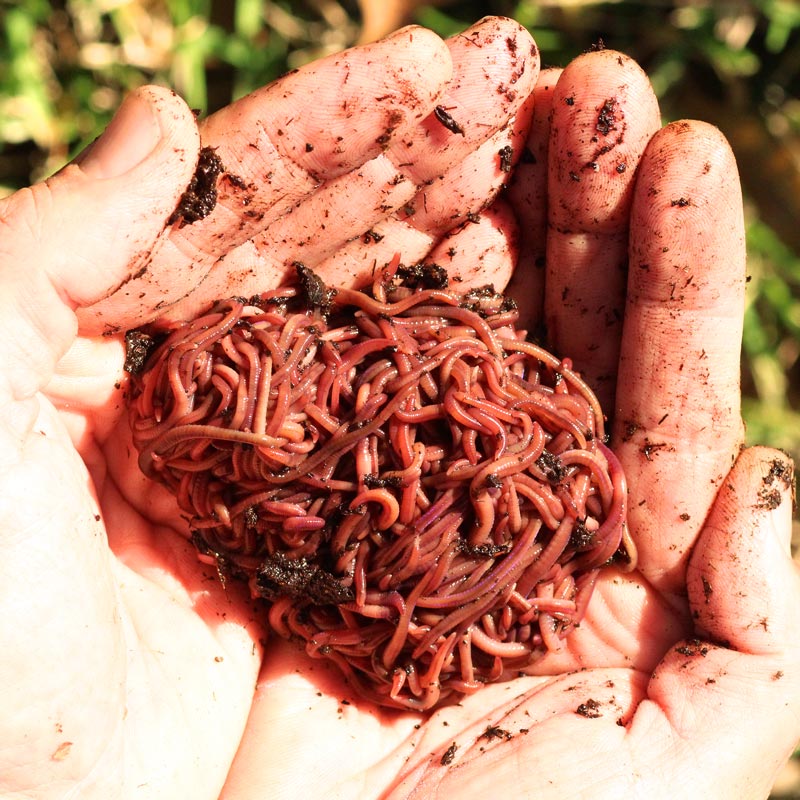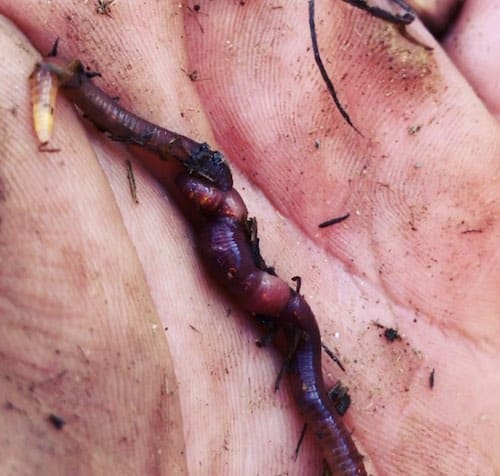Organic Composting with Red Wiggler Worms - Boost Your Yard's Growth
Organic Composting with Red Wiggler Worms - Boost Your Yard's Growth
Blog Article
Optimizing the Perks of Red Wiggler Worms: A Comprehensive Manual for Home Gardeners and Urban Farmers
In the realm of sustainable gardening practices, red wiggler worms stand as unrecognized heroes, quietly transforming natural waste into nutrient-rich castings that can function marvels for dirt health. By checking out the details of just how to properly care for and make the most of the benefits of red wiggler worms, people can open a wide range of chances for enhancing the sustainability and efficiency of their horticulture undertakings.
Comprehending Red Wiggler Worms
Red Wiggler worms, renowned for their efficient composting abilities, are a varieties of earthworms extensively used in vermiculture techniques. These worms, scientifically known as Eisenia fetida, thrive in decaying organic product, making them suitable candidates for composting (Red Wiggler Worms). Red Wigglers are voracious eaters, with the ability of consuming their very own weight in natural waste daily. Their digestive system process breaks down raw material right into nutrient-rich castings, which are an important source for enriching soil and promoting plant development.
One trick quality of Red Wiggler worms is their reproductive price. These hermaphroditic creatures have both female and male reproductive body organs, enabling them to replicate swiftly under favorable problems. A fully grown Red Wiggler can create numerous offspring in a brief period, guaranteeing a stable populace within a composting system.

Setting Up a Worm Bin
When establishing a worm bin for vermiculture objectives, proper preparation and interest to detail are crucial for developing a helpful setting for Red Wiggler worms,. Begin by selecting an ideal container for your worm container. This can be a plastic or wooden container with a cover to keep moisture levels and safeguard the worms from light. Make sure that the bin has drainage openings near the bottom to avoid waterlogging.

Place the worm container in an awesome, dark area away from direct sunshine and severe temperature levels. By following these actions, you can set up a prospering worm bin that will efficiently refine organic waste into nutrient-rich vermicompost for your yard.
Feeding and Maintaining Worms
Making certain a balanced and healthy diet is essential for the health and productivity of Red Wiggler worms in a vermiculture system. It is important to avoid feeding them citrus fruits, onions, garlic, milk products, meat, and oily foods as these can be dangerous to the worms or cause undesirable smells in the bin.
Proper moisture levels are additionally essential for the health of Red Wiggler worms. The bedding ought to seem like a wet sponge, offering adequate wetness for the worms to breathe through their skin. Frequently inspect the wetness levels and change by including water or dry bed linen product as required. Additionally, keeping appropriate temperature conditions between 55-77 ° F(13-25 ° C )will make certain optimal worm activity and reproduction. By diligently monitoring their diet, moisture, and ecological problems, home gardeners and city farmers can maintain a healthy and productive Red Wiggler worm populace for composting functions.
Gathering Worm Spreadings
To efficiently remove nutrient-rich worm castings from the vermicompost, a systematic harvesting process is essential for taking full advantage of the composting benefits. Red Wiggler Worms. The initial step in harvesting worm castings is to encourage the worms to move away of the container. This can be accomplished by positioning fresh food scraps on one side and leaving the opposite undisturbed for a few days. When most of worms have actually moved to the side with fresh food, the castings can be gathered from the opposite side.
After the castings have actually been harvested, it is very important to separate any kind of remaining worms from the spreadings to prevent harming them throughout storage space or application. One reliable technique is to produce conical piles of spreadings under intense light. Worms will naturally move far from the light, permitting for very easy splitting up and removal.
Lastly, the harvested worm spreadings ought to be kept in a trendy, dark, and completely dry location to maintain their quality and performance as a nutrient-rich dirt modification. By following these steps, home garden enthusiasts and metropolitan farmers can make the most of the benefits of red wiggler worms in their vermicomposting systems.
Making Use Of Worm Castings in Horticulture
The unification of nutrient-rich worm spreadings into yard dirt can substantially improve plant development and general dirt wellness. Worm spreadings, additionally known as vermicast, are a natural fertilizer produced by red wiggler worms as they damage down raw material. These spreadings are rich like this in necessary nutrients like nitrogen, phosphorus, potassium, and valuable germs that advertise plant development and boost dirt framework.
When making use of worm spreadings in gardening, it is necessary to mix them completely into the dirt or utilize them as a leading dressing around plants. The slow-release nature of worm castings makes sure a consistent supply of nutrients to plants over time, decreasing the risk of nutrient leaching and advertising lasting dirt fertility. Additionally, worm castings help enhance soil oygenation, water retention, and microbial task, creating a healthy and balanced setting for plant origins to flourish.

Conclusion
In final thought, the usage of red wiggler worms in home horticulture and metropolitan farming can substantially profit dirt health and plant growth. By understanding exactly how to establish and preserve a worm bin, feed the worms properly, and harvest their nutrient-rich castings, garden enthusiasts can optimize Your Domain Name the advantages of these earthworms. Including worm spreadings into horticulture methods can boost dirt fertility and overall plant productivity. Generally, red wiggler worms offer a lasting and effective solution for boosting garden and farm returns.
In the world of sustainable horticulture techniques, red wiggler worms stand as unrecognized heroes, quietly transforming organic waste right into nutrient-rich spreadings that can work wonders for soil health.When developing a worm bin for vermiculture functions, proper preparation and attention to information are vital for developing a conducive atmosphere for Red Wiggler worms. The very first action in gathering worm castings is to motivate the worms to move to one side of the container. Worm spreadings, likewise known as vermicast, are a natural plant food produced by red wiggler worms as they break down natural matter. By understanding just how to set up and maintain a worm bin, feed the worms properly, and their explanation harvest their nutrient-rich spreadings, garden enthusiasts can make best use of the advantages of these earthworms.
Report this page